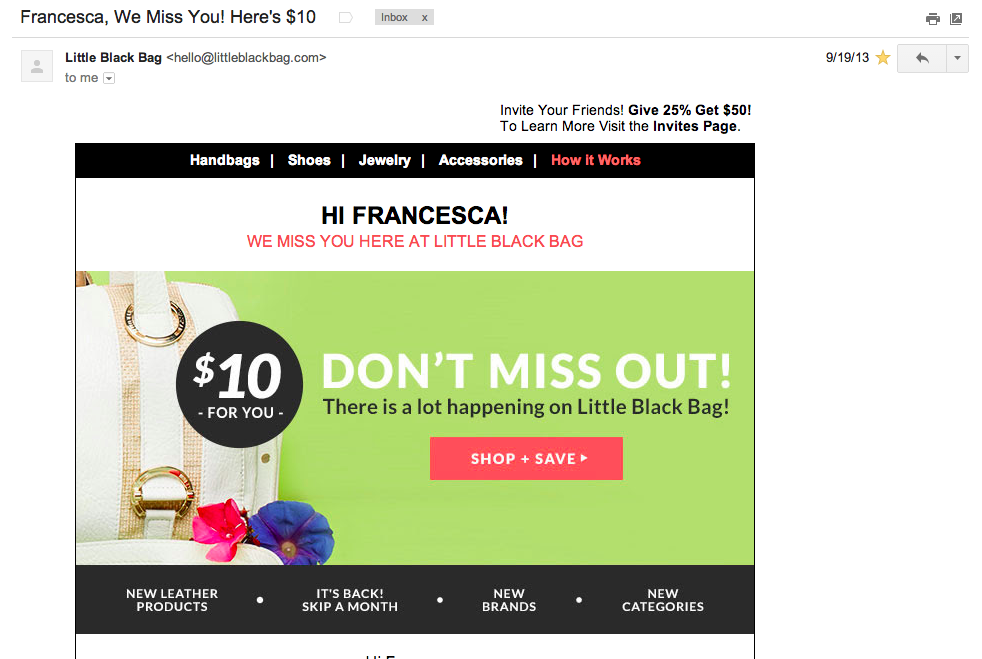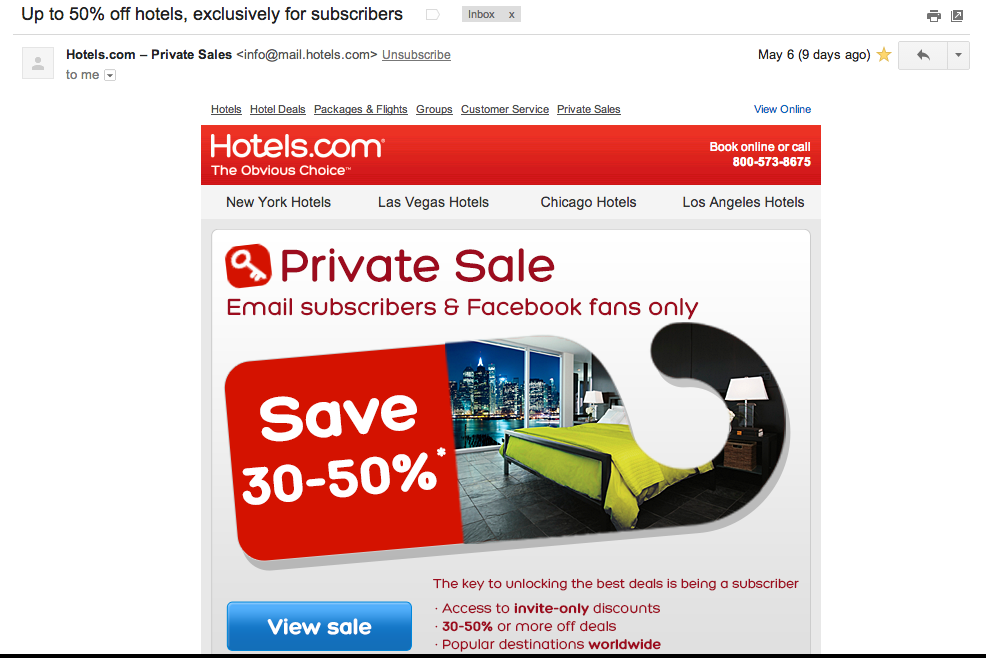As far as online marketing strategies go, email is what some people would consider a dinosaur–it’s been here since the beginning. But unlike our extinct friends, we know that email won’t be going anywhere anytime soon.
As far as online marketing strategies go, email is what some people would consider a dinosaur–it’s been here since the beginning. But unlike our extinct friends, we know that email won’t be going anywhere anytime soon. It may not be as hip as wearable tech or augmented reality, but study after study has found that email continues to be one of the most effective ways to reach, engage, and convert users.
Research has shown that “when it comes to attracting new customers – email works almost 40 times better than Facebook and Twitter combined”. Not only that, but people are 3 times more likely to make a purchase (and spend more) when they click on links in emails, compared to social media.
With stats like that, it’s pretty clear that email is here to stay. Which is why if you’re not taking advantage of it, you could be missing out on a lot of business. To make sure that doesn’t happen, we came up with this quick retailer’s guide on how to do email marketing right.
Step 1: Collect email addresses with efficiency… and style
Ditch the pen and paper when collecting email addresses at checkout. Why? For one thing, this method takes more time. It could slow down the checkout process and keep people waiting.
Another disadvantage of the pen and paper method is that it actually doubles the work you need to do, because it requires you to re-enter your customers’ information. This not only takes up time, but it also opens up room for error. What if you mistype a character, for instance. Or, what if you can’t read the person’s handwriting?
It’s best to avoid all that and just capture email addresses electronically so they are entered directly into your system. The easiest way to do this is through your point-of-sale solution. Most modern POS systems enable retailers to enter customer information at checkout, so be sure to take advantage of that feature by asking people to provide their email address when you’re ringing them up.
Vend Tip
You can also use Vend’s email receipt function. Customers will receive their receipt in their Inbox along with a quick link to enroll in your loyalty program and get on your list. This helps you save time, paper, and get a new subscriber in one fell swoop.
If you’re using a POS system that doesn’t offer an email capture feature, there are a number of apps that will help you get the job done. For example, there’s SignUpAnywhere, a nifty HTML5 application that lets you collect email addresses using your iPad.
Or if you’re already using an email marketing software, check if it comes with its own mobile app. MailChimp for instance, has Chimpadeedoo, while Campaign Monitor has an app called Enlist.
Step 2: Incentivize customers to join your list
This part is optional, but if you want to increase your sign up rate, you may want to consider bribing incentivizing shoppers to give you their email. Don Uselmann at Saks Fifth Avenue makes a few suggestions:
a. Discounts / Offers – “Sign up for our newsletter and get 10% off your next purchase!” or “Sign up to receive exclusive offers delivered straight to your inbox.”
b. Raffles – “Register with your email address and get a chance to win…”
c. Worthwhile Causes – “Save trees. Let us email you your receipt instead.” or “For every email we collect, we’ll donate $$ to [insert cause that you and your customers believe in here].”
Step 3: Segment and personalize
Now that you’ve gotten people to sign up for your list, let’s make sure they stay there. The key to keeping your subscribers happy is to send them relevant and personalized messages.
You can do this by segmenting your subscribers. Put your customers into specific groups and send tailored emails to each one. This helps you stay relevant and ensures that you’re sending the right messages to the right people.
How exactly can you slice and dice your subscriber list? Here are some common ways:
a. Gender – Do you sell to both men and women? Group them according to their gender so you can send them better product recommendations and offers. Say you’re having a storewide sale. Instead of sending out one generic blast, you can create gender-specific campaigns and segment customers accordingly. Your female subscribers could get a sale alert featuring summer dresses, while the guys would get an email about neckties or men’s trousers.
b. Location – Segmenting customers according to location is a must if you have multiple branches or if you have events or pop-up stores in different areas. If you’re having a sale in your Austin location, for example, you’d only want to alert those in the area instead of say, giving the people in Philadelphia a heads up.
Here’s a great example of subscriber segmentation in action. A while back, American Express OPEN Forum hosted a Los Angeles event specifically for women. To make sure that only the right people received its message, Amex segmented users by gender AND location. The result? A highly relevant e-vite that made subscribers feel valued.
c. Purchase History – Put customers’ purchasing data into good use by segmenting them based on the items they previously bought. This will enable you to send appropriate product suggestions, refill alerts, and offers.
d. Customer Activity / Interaction – Group your customers based on how often they buy from you. Get to know your most loyal subscribers as well as your not-so-engaged customers, and then tailor your approach.
Check out what Little Black Bag is doing. The ecommerce site tracks customer activity and sends “We miss you” offers to people who haven’t stopped by in a while.
On the flip side, Hotels.com sends special deals to its engaged email subscribers and Facebook fans.
Consider doing something similar for your most active customers. Offering exclusivity makes subscribers feel special and earns you loyalty points (and hopefully sales!)
Step 4: Give people more control over their subscriptions
Get people to stay subscribed by encouraging them to take control of their subscription. Give them the ability to modify their preferences, specifically when it comes to the frequency of your emails. Surveys have shown that too many emails is the top reason for unsubscribes, so you want to make sure that you don’t turn off your subscribers with too many messages.
Jetsetter for instance, has a simple email preferences page that lets users indicate whether they want to receive messages on a daily, weekly, or monthly basis.
Step 5: Track and optimize
Email marketing has many moving parts. There’s subject lines, timing, segments, and length, just to name a few. We’d love to give you solid best practices on how and when to send your messages, but the fact is, the rules of email aren’t set in stone.
The best way for you to figure out the right schedule, content, or themes for your emails is to run tests and track your campaigns. Monitor each campaign until you get a handle on what subject lines, schedules or content work best for your audience.
Case in point: Swaychic. The retailer wanted to increase email open rates and engagement, so it analyzed several metrics, including the time of day when subscribers read its messages, the time of actual conversions, the days with the highest open rates, and more.
Swaychic then tested and tweaked its campaigns based on its findings. It divvyed up subscribers into different time slots (i.e. early morning, late morning, afternoon, or evening) then moved users into different groups depending on the results.
By optimizing the timing of its campaigns (among other things), the retailer increased its open rate by 40%, doubled its CTR, and tripled revenue for each campaign.
Bottom Line
As great as these tips are, they won’t be very effective if you don’t have a genuine connection with your customers. Remember, at the end of the day, people give out their information to companies that they like and trust, so before ramping up your email strategy, it’s important that you work on being a business that your customers would actually want to receive emails from.






